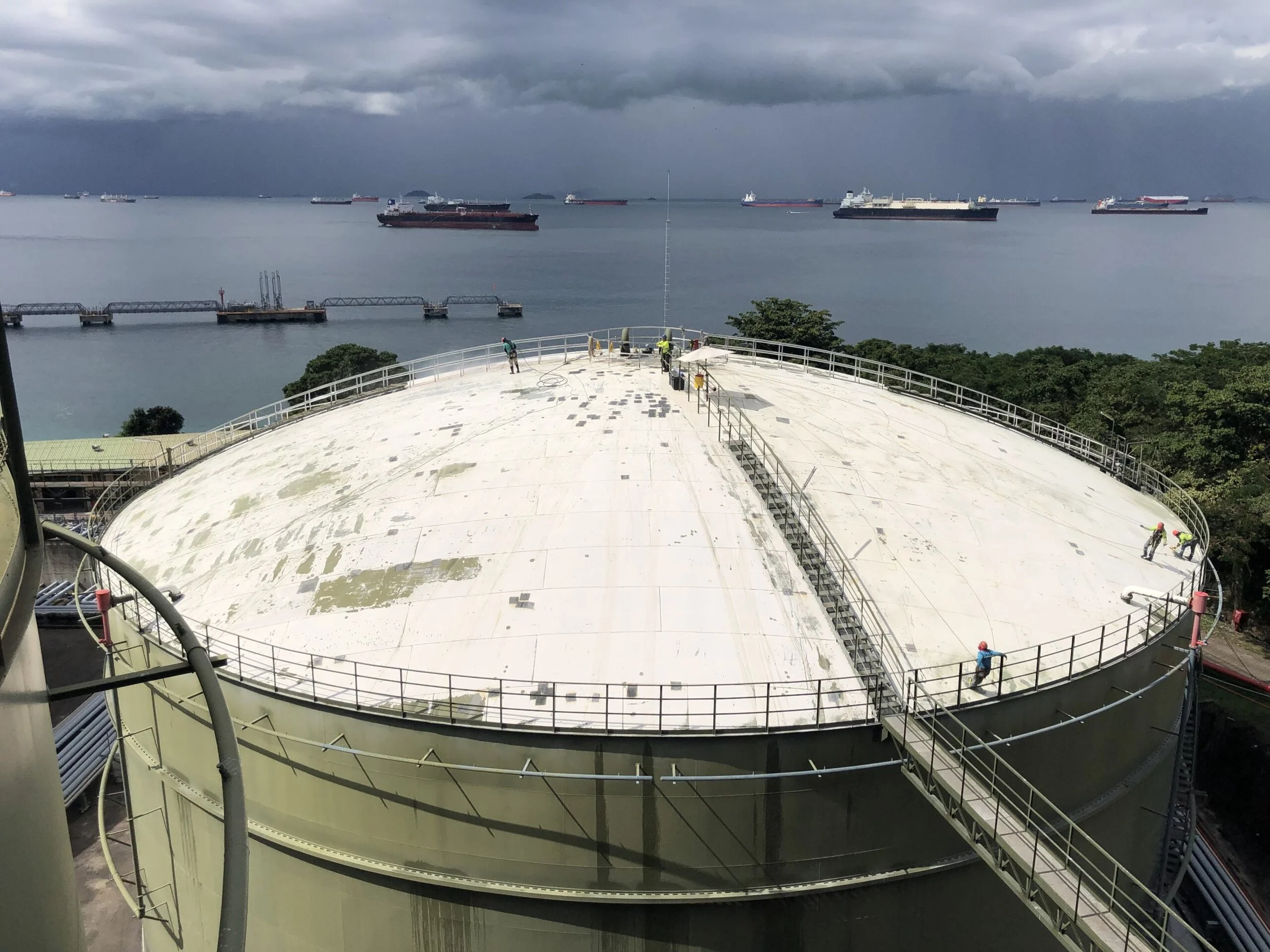The Smarter Choice for Industrial Infrastructure: CFRP Tank Repairs
The Challenge of Tank Deterioration
Industrial tanks are essential assets for power generation, manufacturing, and utilities, yet they operate in conditions that accelerate deterioration. Constant pressure cycling, chemical exposure, temperature swings, and settlement can cause cracking, wall thinning, and corrosion. Historically, owners faced a difficult choice: accept escalating maintenance and risk, or schedule invasive steel repairs and full replacements that require lengthy shutdowns. Carbon Fiber Reinforced Polymer (CFRP) provides a practical alternative that restores capacity while limiting disruption.
CFRP systems bond high-strength fibers with epoxy resins to create a composite shell that works with the existing substrate. Applied internally or externally, wraps and laminates redistribute stresses, bridge cracks, and add hoop sThe Challenge of Tank Deterioration
Industrial tanks are essential assets for power generation, manufacturing, and utilities, yet they operate in conditions that accelerate deterioration. Constant pressure cycling, chemical exposure, temperature swings, and settlement can cause cracking, wall thinning, and corrosion. Historically, owners faced a difficult choice: accept escalating maintenance and risk, or schedule invasive steel repairs and full replacements that require lengthy shutdowns.
CFRP Tank Repairs: The Smarter Alternative
Carbon Fiber Reinforced Polymer (CFRP) provides a practical alternative that restores capacity while limiting disruption. CFRP systems bond high-strength fibers with epoxy resins to create a composite shell that works with the existing substrate. Applied internally or externally, wraps and laminates redistribute stresses, bridge cracks, and add hoop strength without adding significant weight. Because the material conforms to curved geometries, it is ideal for cylindrical tanks, domed roofs, and complex nozzle penetrations where traditional plating is cumbersome.
Business Case for CFRP Tank Reinforcement
For owners, the business case is clear. Installation is non-invasive and typically performed with limited or no outage, reducing lost production. The composite’s inherent corrosion resistance stands up to chlorides, acids, and caustics, extending inspection intervals and lowering lifetime spend. When combined with compatible liners and coating systems, CFRP also helps contain permeation and mitigates future degradation at known weak points such as weld seams and lap joints.
Typical Use Cases
CFRP tank reinforcement is effective across a wide range of applications, including:
Cooling-water and fire-water tanks
Chemical storage vessels
Digesters
Secondary containment systems
Where settlement or foundation movement has introduced local overstress, CFRP can be applied only where needed, maximizing impact per dollar. Engineering design verifies required laminate schedules and factors in temperature, pressure, and fluid compatibility so performance is predictable and code compliant.
Sustainability and Long-Term Value
Sustainability benefits are substantial. By reinforcing instead of replacing, owners reduce demolition waste, new steel consumption, and trucking emissions, while recovering capacity and reliability. The result is an asset that returns to service quickly, performs safely, and remains easier to inspect going forward.
CFES Tank Reinforcement Expertise
CFES designs and installs tank reinforcement systems tailored to each facility’s duty, environment, and budget. If inspections are showing cracking, through-wall pits, or coating failure, a focused assessment can determine whether CFRP is the most effective path to extend service life without the disruption of a full replacement.

